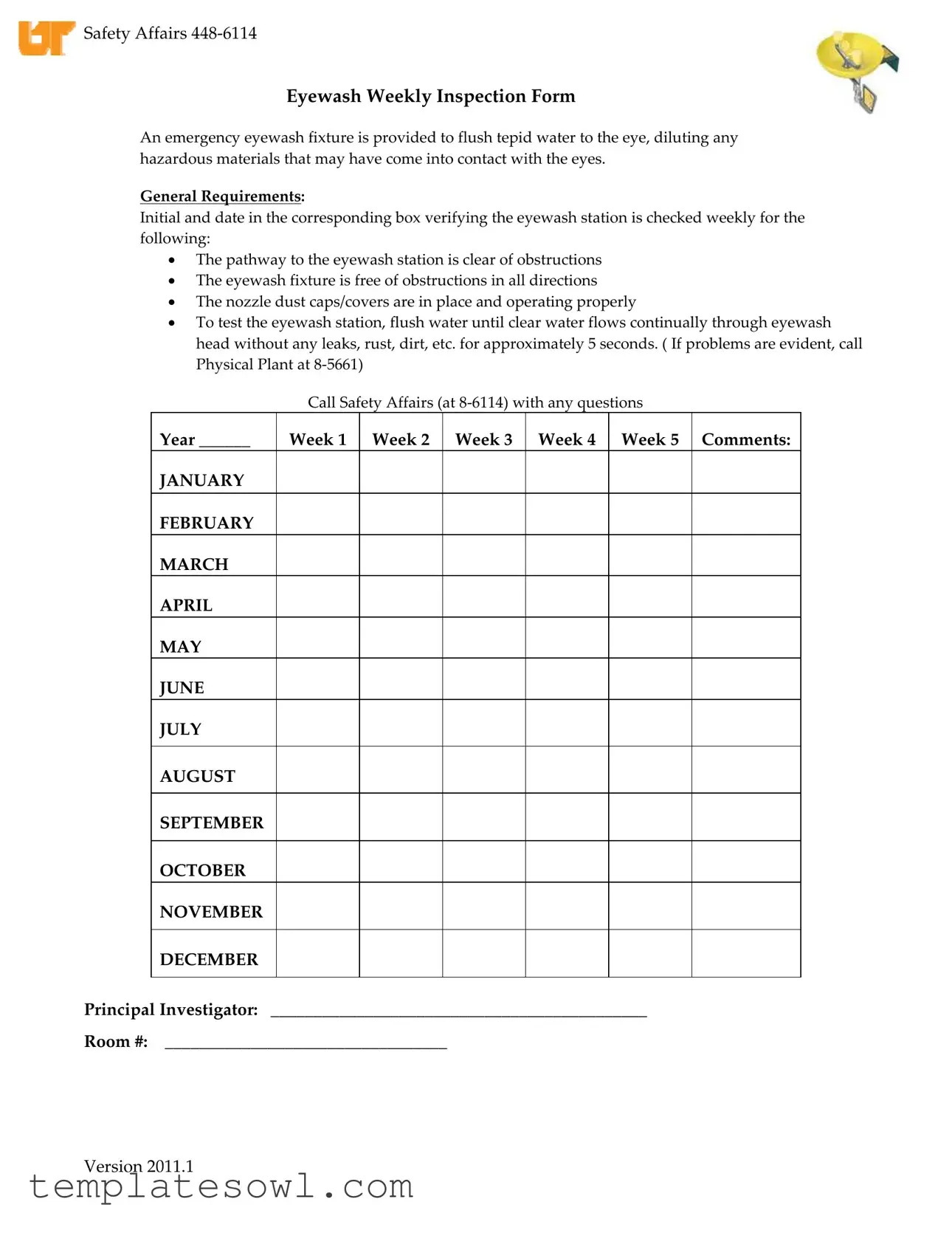What is the purpose of the Eyewash Station Log Sheet?
The Eyewash Station Log Sheet is used to ensure that emergency eyewash stations are functioning properly. Regular checks are essential to guarantee that the equipment is ready for use in case of an emergency. It helps document the maintenance and inspection of the eyewash station.
How often should the Eyewash Station be inspected?
The eyewash station should be inspected weekly. Each inspection requires the person performing it to initial and date the log sheet, confirming that a thorough check was completed. This regular schedule helps maintain safety standards in the workplace.
What specific items need to be checked during an inspection?
During an inspection, several important items must be checked. The pathway to the eyewash station should be clear of any obstructions. The eyewash fixture must also be free of obstacles in all directions. Additionally, ensure that the nozzle dust caps or covers are securely in place and functioning correctly. Finally, test the eyewash station by flushing it for about five seconds to confirm that clear water flows without any leaks or dirt.
What should I do if I find a problem with the eyewash station?
If any issues are found during the inspection, such as leaks or obstructions, it is important to report them immediately. For repairs or maintenance, contact the Physical Plant at extension 8-5661. For any other questions related to safety, reach out to Safety Affairs at extension 8-6114.
How do I record inspection results?
Results of the inspection should be recorded on the Eyewash Station Log Sheet. Each week, fill out the appropriate week column and include your initials and the date. Add any comments regarding the condition of the eyewash station or actions taken as necessary.
Is training required for individuals inspecting the eyewash station?
While there may not be formal training for inspectors, it is important that anyone performing inspections is familiar with the eyewash station’s operation and the inspection checklist. Understanding each aspect of the checklist is crucial to identifying potential issues quickly and accurately.
What information is included in the log sheet?
The log sheet includes several key pieces of information. This includes the year, weeks of inspection, room number, and details about the principal investigator responsible for the eyewash station. It’s essential to have clear documentation of who is overseeing safety and maintenance.
How does this form contribute to workplace safety?
This form plays a significant role in workplace safety. By documenting regular inspections, it ensures that help is readily available if an employee is exposed to hazardous materials. Consistent checks promote accountability and help keep the eyewash stations in optimal condition for any emergencies that may arise.
Can I access a physical copy of the form?
Yes, physical copies of the Eyewash Station Log Sheet can typically be obtained from your safety department. If you need additional forms, contact Safety Affairs to ensure you have an adequate supply for ongoing inspections.


 Safety Affairs
Safety Affairs